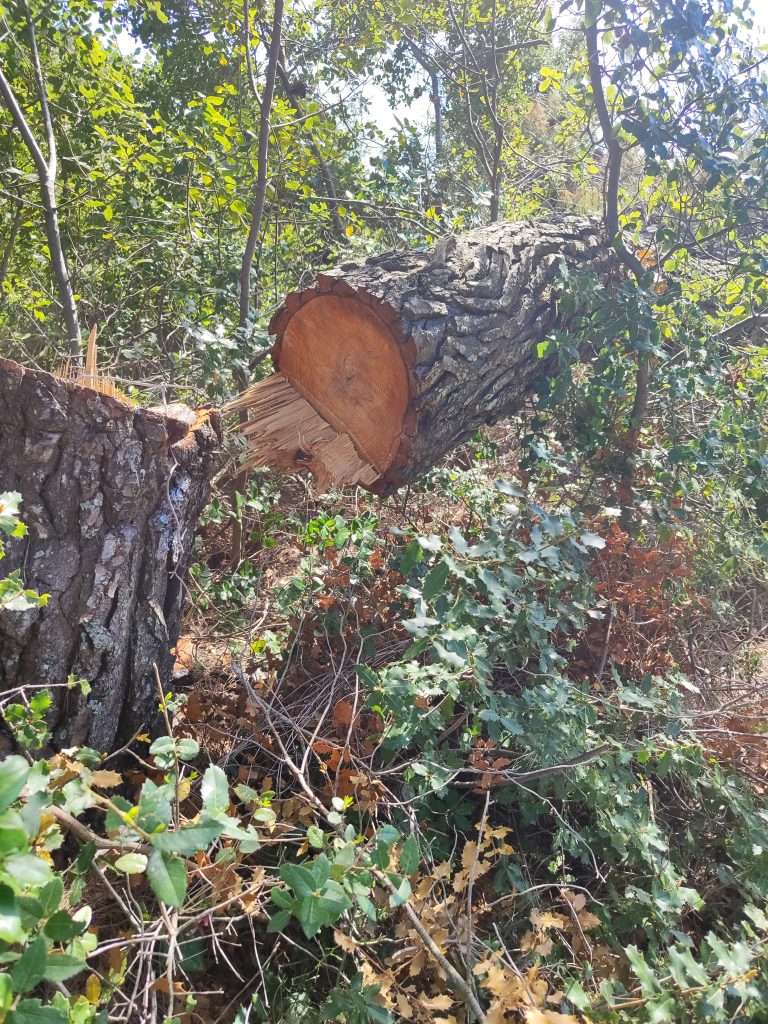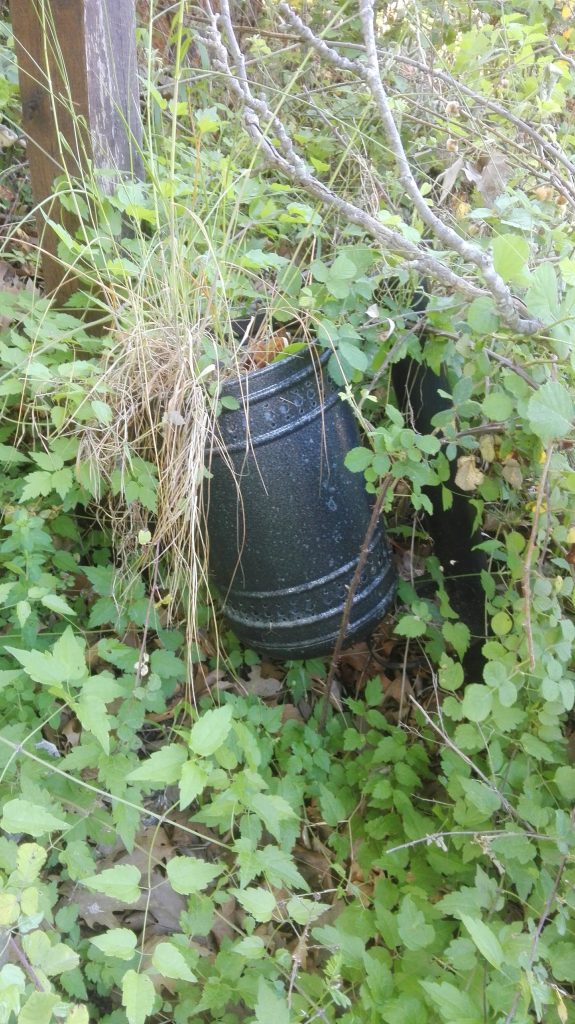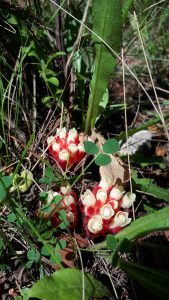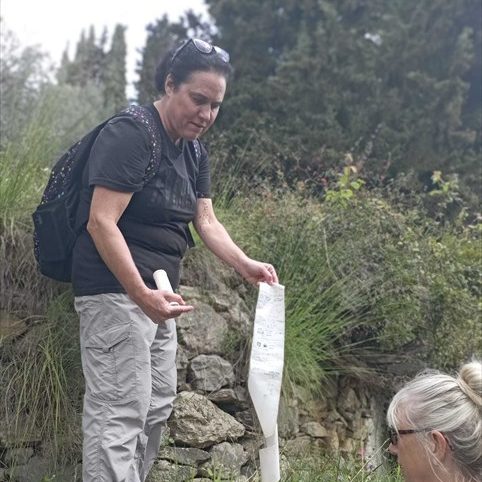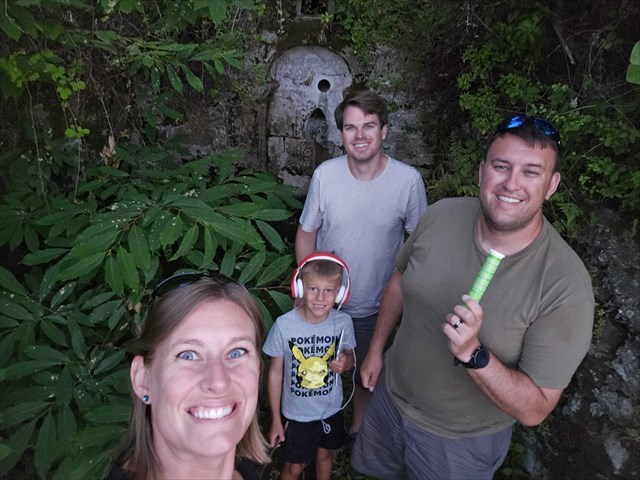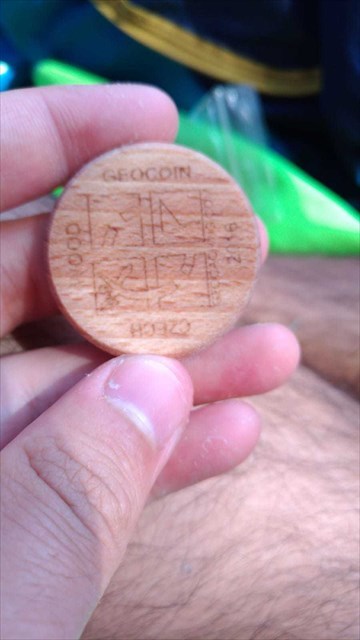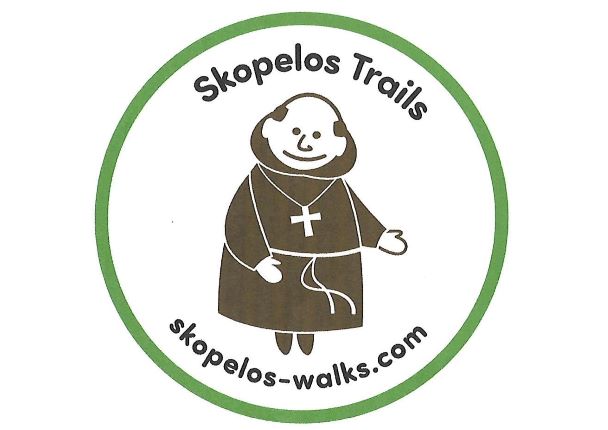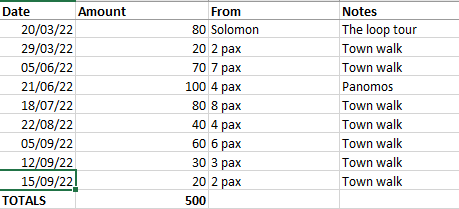The trail clearing season 2023 started in early January with the volunteers arriving on the island before I did. But primed with instructions, my dog sitter got them started, showing Baiba from Latvia and Robert from Canada, the trail head and which tools to use. By the time I arrived, a week later, they had finished the first section of the Polymistria trail and made an excellent job of it too. Together we continued down to Petrovrissi. Job done.
We then moved over to Kalogeros. I’ve always wondered where the water source for the village was. After asking around, we were taken to a sort of trail head and started to work our way into the jungle. I later thought it was wrong but was probably right! Whatever, we worked our socks off on reopening a trail that had been closed for over 25 years. Eventually, we emerged at the coast beside a beautiful, ruined kalivi. But no spring. We still haven’t found it but having spent 120 man hours on clearing a trail, we will not give up. We also had help from Kerasia for a couple of days.
Next up was a day’s maintenance at Ypermachou church, Potami. It hardly needed any work at all! What a lovely surprise.
Finally, we made a start at the hamlet of Pera Karia. There are four monasteries in this area (see previous post) and this trail used to link Ag Georgos and Analipsis. I had used it regularly some 20 years ago but it was now totally blocked with fallen trees and thickets of smilax. We worked there for two days before it was time for Baiba and Robert to leave. Excellent workers who are welcome back.
Then it snowed and became very cold indeed, so just as well I had a cancellation.
During that time, I had a call from Peter, a Dutch guy who had recently moved to Glossa. He asked me to help with the clearing of a path to a waterfall down in Loutraki. This lead to us also reopening an old calderimi that runs from beside the old Avra hotel, across the top of the waterfall and emerges at the bus stop on the asphalt road. I’d been wanting to get that reopened for ages. It was full of rubbish that a neighbour had chucked over from his property, not to mention trees and a landslip problem. Peter and a local guy called Nikos worked very hard on that project.
Alex Wright from the UK was the next volunteer to arrive. We worked 7 days between the 9th and 28th March. It rained the other days. However, we at least finished the Pera Karia trail that Baiba and Robert had started. The lower part starts on the EU Road on a bend leading to the Analipsis monastery. In the future it will link to the old trail in the valley between Djelili and Kriavrissi.
Next to arrive (17th April) was Suzie from Australia. Our first day (19th April) was to start on the Monks trail at the XTA (landfill) site. We collect bags and bags of rubbish that had blown over from the site onto the trail. Really disgusting. We were helped that day by Anna and Opel. Not wishing to frighten Suzie off, plus it was just the two of us, I switched work to a more pleasant environment in Potami. There’s a lovely portion of calderimi that cuts the corner of Diakopi for those wishing to head to the old spring. We worked there until 2nd May, On 4th May we did one day’s maintenance on the Gateway trail and inspected a newly erected illegal fence across the river at Lalaria (since removed). On 6th April we started at Glysteri (the other end of the Monks trail) but switched the next day on the Chickpea trail where we were joined by Christian from Austria on the 11th. He picked up the chainsaw as if it were a toy and got stuck in! We removed fallen trees and cut away vegetation and got the trail finished in three days, all the while trying to avoid stepping on the masses of orchids and other beautiful wild flowers growing there.
On the 14th May, disaster. After Ag Reginos, Pirgos, power lines run above the Retsina Trail. Throughout the winter, many trees were cut beside the main road if they were close to power lines. They went a bit overboard and the island looks somewhat denuded. But they also went into the forest and cut trees and just left them across the trail and blocked it entirely. Some huge trees were left, one on top of the other. Others one after the other along a straight stretch of trail. The matter has been reported to the Forestry department. Christian was able to chainsaw a small detour to avoid the pile of huge trunks and we were able to remove the rest of the trees beyond. We continued down to Platanakia, creating a tunnel and also cutting away lots of branches left hanging by the power company workmen. It’s a mess. That day we had help from tourist Martin Andrews. He was here with a Ramblers International walking group. Not a good introduction to the way things are done here. We were so fed up we retired to Captain Spiros at Elios and drowned our sorrows in tchipero. Martin didn’t realize one was supposed to sip it and he downed TWO bottles in a short time. Goodness knows what his wife thought when he returned that evening!
On the 17th March Suzie, Christian and I returned to Glysteri. We had a day’s help from Sally. Christian left on the 19th and Suzie and I ploughed on, finishing on the 20th. Suzie left on 21st. We didn’t manage to finish this trail but it is passable. The rockrose is pretty thick though. This will be my first job in September.
Thank You to all the above mentioned volunteers. Our trails would be totally closed without your hard work. It really is appreciated.
In between all the above, we also went round most of the Geocaches to check them out. Many were strangely missing. One newly placed one was found on the ground, it’s cap chewed. Perhaps they are being taken by animals? Who else would want to take them. Trouble is, I then have to replace them and think of a more secure way of keeping them put. Caches get very annoyed when they can’t find the hide.
We also helped with a study being carried out by the University of Saville in Spain on the cystus rock rose parasite. It involved taking samples and drying them in rock salt plus pressing others. Once dry, which took about ten days, we sent them off in the post.
Applications to volunteer for September have already arrived but in the meantime, I’m looking forward to a rest, then my next Camino; The Portuguese Way.
/


